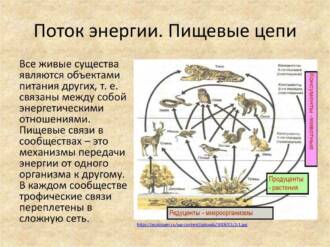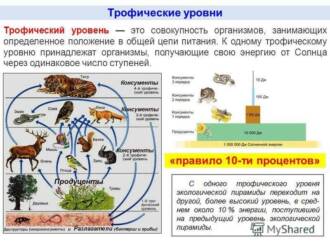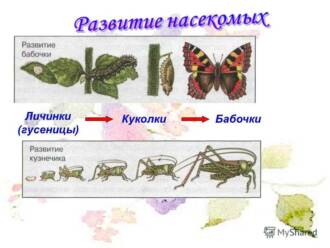
Butterflies are among the most beautiful creatures of nature. Their delicate wings, bright colors, and graceful movements attract the attention and admiration of people from all over the world. But beyond their beauty, butterflies also play an important role in the ecosystem and the world around us.
One of the amazing facts about butterflies is their incredible diversity. There are approximately 20,000 species of butterflies, each with a unique shape, color and size. Some butterfly species may have wings that are only a few millimeters long, while others can reach sizes of up to 30 centimeters. This diversity makes butterflies some of the most diverse creatures on the planet.
Butterflies also play an important role in plant pollination. When a butterfly lands on a flower, it transfers pollen from one flower to another, which helps in pollination and plant reproduction. This process is an integral part of the life cycle of many plants and is important for the conservation of biodiversity in nature. Without the participation of butterflies, many plant species would not be able to reproduce and survive.
In addition, butterflies also serve as food for many animals. Birds, lizards, frogs and other predators feed on butterflies and their caterpillars. Because of this, butterflies are an important part of the food chain and help maintain balance in natural communities.
Butterflies are not only beautiful creatures, but also irreplaceable participants in the ecosystem. Their diversity, role in pollination of plants and function in the food chain make them important for maintaining biodiversity and balance in nature.
Butterflies: a world of magical creatures

Butterflies are amazing creatures that attract attention with their colorful wings and graceful flight. They are one of the most beautiful insects and can be found in many parts of the world. Each species of butterfly has its own unique coloring and patterns on its wings, which makes them even more impressive.
Butterflies play an important role in the ecosystem as they are plant pollinators. They transfer pollen from one flower to another, facilitating the pollination process and allowing plants to reproduce. Without butterflies, many plant species would not be able to reproduce and continue to exist.
Interesting fact: Butterflies can fly vast distances in search of food and breeding sites. For example, monarch butterflies migrate several thousand kilometers every year to find suitable conditions for their life.
Butterflies also play an important role in the food chain, providing food for many animals, including birds, lizards and bats. Some butterfly species are also poisonous and serve as a defense mechanism against predators.
Interesting fact: Butterflies have a complex life cycle, going through several stages, from egg to caterpillar, pupa and finally adult. This process can take anywhere from a few weeks to a few months, depending on the species.
Butterflies are amazing creatures that are part of our amazing natural world. Their beauty and role in the environment make them truly magical creatures that you want to learn more about.
Variety of butterflies: from small to giant

Butterflies are amazing insects that amaze with their diversity of shapes, sizes and colors. There are more than 180,000 species of butterflies in the world, and each of them is unique and amazing in its own way.
Among butterflies you can find the smallest representatives of insects, such as the minimalist butterfly, measuring only a few millimeters. Their wings are transparent and covered with tiny scales, which give them special beauty and tenderness.
However, there are some real giants in the butterfly world. For example, the largest butterfly is the satin moth, which can reach up to 30 cm in size. Its wings are decorated with bright golden and brown stripes, giving it a luxurious appearance.
Butterflies can have a wide variety of colors, from delicate pastel shades to bright and rich ones. They often have bright colors to warn predators that they are poisonous or that their body tastes good. Butterflies may also have camouflage colors to hide among their surroundings and avoid danger.
Additionally, butterflies are known for their unique patterns on their wings. Some of them have complex and geometric patterns that look almost like art paintings. The patterns and colors on butterfly wings often serve to attract mates or ward off predators.
Unique features of butterflies: from color variety to wings
Butterflies are one of the most colorful and diverse insect species. They feature an incredible variety of colors and patterns on their wings. Each species of butterfly has its own unique coloring, which helps them hide from predators or attract partners for reproduction.
Butterfly wings also have unique features. They are covered with a thin layer of pollen, which helps butterflies to fly. Butterfly wings also have small scales that give them a special texture and shine. These scales can come in different shapes and sizes, which gives butterfly wings even more beauty and uniqueness.
One of the unique characteristics of butterflies is their ability to undergo metamorphosis. Butterflies go through four stages of development: egg, caterpillar, pupa and adult butterfly. Each stage has its own characteristics and functions. For example, caterpillars feed on plants, while pupae hibernate and undergo internal changes to develop into beautiful butterflies.
Butterflies also play an important role in the world around us. They are pollinators for many plants, helping them reproduce and spread. Butterflies also provide food for many animals, including birds and bats. They can also be an indicator of environmental health, as they are sensitive to pollution and habitat loss.
The role of butterflies in the ecosystem: pollinators and food for other animals
Butterflies play an important role in the ecosystem as plant pollinators. While visiting flowers, butterflies transfer pollen from the stamens to the pistils, facilitating the pollination process. Thanks to this, plants can produce seeds and fruits, which is the basis for the diversity of living organisms in the ecosystem.
In addition, butterflies are an important food for other animals. Butterfly larvae, known as caterpillars, provide food for many birds, small mammals and insectivores. Adult butterflies are also eaten by birds, lizards and bats, providing an important source of nutrition for these animals.
Butterflies also play a role in the food chain. Female butterflies can lay eggs on plants on which the caterpillars feed. The caterpillars, in turn, feed on plant leaves, which can affect plant growth and development. Thus, butterflies are an important link in the food chain and interact with other organisms in the ecosystem.
Butterflies and plants: a mutually beneficial partnership

Butterflies are important pollinators of plants. As they visit flowers, they move pollen from one flower to another, promoting pollination and the formation of new seeds. This mutually beneficial partnership between butterflies and plants allows them to ensure their reproduction and continuation of the species.
Butterflies are attracted to the flowers because of their bright colors and sweet nectar. In addition, nectar is a source of nutrition for butterflies, containing the nutrients and energy they need. The interaction of butterflies and flowers also contributes to plant diversity, as different species of butterflies prefer certain types of flowers, which promotes the spread of different plants.
However, butterflies not only benefit from this partnership, but are also important facilitators of plant conservation. Some butterfly species, such as monarchs, are important indicators of ecological health. They are sensitive to changes in the environment and can serve as an indicator of pollution and deterioration in habitat quality. Thus, conserving butterflies and their habitats helps preserve and develop plant diversity.
Butterflies in culture and art: symbols of beauty and transformation
Butterflies, with their intricate wings and bright colors, have long been a symbol of beauty and transformation. Different cultures around the world associate butterflies with different symbols and ideas.
Symbol of beauty and aesthetics
Butterflies are one of the most beautiful and graceful creatures on the planet. Their vibrant wings with unique patterns and colors attract attention and admiration. In art, butterflies are often used as motifs to create beautiful paintings, fabric patterns, and jewelry. They become a symbol of beauty, elegance and sophistication.
Symbol of transformation and change
The butterfly goes through an incredible transformation: from egg, worm and pupa to an adult insect with wings. This process of transformation has become a symbol of change, growth and development. In various cultures, butterflies are associated with the transition from one state to another, with rebirth and new beginnings. They symbolize the ability to overcome difficulties and transform into something new and beautiful.
Symbol of the spiritual path
In some cultures, butterflies are seen as a symbol of the spiritual path and enlightenment. They are associated with the transformation of the soul and its desire for higher consciousness. Butterflies flying from flower to flower symbolize spiritual growth and the search for truth. In some religious traditions, butterflies are also associated with resurrection and life after death.
In art and culture, butterflies represent beauty, transformation and spiritual growth. They serve as inspiration for artists, writers and designers, and also carry deep symbolic meanings for many people.
Butterflies and Science: Research and Discovery
Butterfly migration studies
Scientists from different countries are conducting research to understand the mechanisms of butterfly migration. They study travel routes and durations, as well as factors influencing migration success. Research is revealing how butterflies find their way using the sun, the Earth's magnetic field and other landmarks.
Discovery of new butterfly species

Scientists are constantly discovering new species of butterflies. They study their structure, color, behavior and habitats. The discovery of new species allows scientists to understand the diversity and evolution of butterflies, as well as assess the health of the ecosystems in which they live.
Research on the influence of butterflies on plants
Butterflies play an important role in plant pollination. Scientists study butterfly-plant interactions to understand how they influence plant reproduction as well as biodiversity in the environment. Research helps scientists develop strategies to conserve and protect butterflies and their habitats.
Butterfly genetics research
Genetic studies allow scientists to understand how butterflies develop and evolve. They study the genes responsible for wing color, body shape and size, and the ability to migrate. Research into butterfly genetics helps expand our knowledge of the principles of inheritance and evolution in nature.
Butterfly migrations: amazing long-distance journeys
Butterfly migrations are an amazing phenomenon that amazes with its complexity and duration. Some species of butterflies are capable of covering huge distances to find a suitable place to breed or to survive unfavorable climatic conditions.
One famous example of butterfly migration is the migration of monarch butterflies. Every fall, millions of monarch butterflies from the northern regions of North America make the long journey south to Mexico. This journey can take several months and exceed 3,000 kilometers. Butterflies fly in large colonies, forming giant clusters on trees in the mountains of Mexico. This phenomenon is impressive in its scale and beauty.
Butterfly migrations are carried out using various orientation mechanisms. One of them is using the sun and stars for navigation. Butterflies have special sensory organs that allow them to navigate in space and find the right direction. They also use smells and visual cues to find their way.
Butterfly migrations play an important role in the ecosystem. They help spread pollen and pollinate plants, which helps maintain plant diversity. In addition, butterfly migrations are an object of study for scientists who seek to understand the causes and mechanisms of these amazing journeys. Such research could help conserve and protect butterflies and their migrations in the future.
Protection of butterflies and their place in biodiversity conservation

Butterflies are an important part of our planet's biodiversity. They perform several key functions in nature and play a significant role in its conservation. Butterfly conservation is important for maintaining ecological balance and preserving biodiversity.
Butterflies play an important role in plant pollination. They transfer pollen between flowers, promoting plant reproduction. Without their participation, many plants would not be able to reproduce and continue to exist. Therefore, protecting butterflies is an integral part of preserving the plant world.
In addition, butterflies are food for many animals such as birds, lizards and frogs. They form an important element of the food chain and maintain balance in the ecosystem. If butterflies disappear, it could disrupt food chains and deteriorate conditions for other animal species.
Butterfly conservation includes various measures. It is important to preserve and restore their natural habitats such as meadows, forests and gardens. It is also necessary to limit the use of pesticides that can harm butterflies and their eggs. Additionally, it is important to conduct educational programs to raise people's awareness of the importance of butterflies and their role in biodiversity.
Butterfly conservation helps preserve biodiversity and maintain ecological balance. They are not only beautiful and amazing creatures, but also important participants in the natural system. Without them, our world would become less diverse and beautiful. Therefore, butterfly conservation should be our priority to preserve them for future generations.






